
TRENDING FASHION IN SAO TOME AND PRINCIPE
25 June 2022
TRENDING FASHION IN IVORY COAST
8 July 2022The Republic of South Sudan, sometimes known as South Sudan, is a landlocked nation in Central Africa, with population of about 12,778,250 people. It is bordered by Ethiopia, Sudan, Central African Republic, Democratic Republic of the Congo, Uganda and Kenya. The capital and largest city is Juba. The Nilotic Republic is a colloquial name for the country (as the supposed place of origin of the Nilotic peoples).
It became independent from Sudan in July 2011, following a referendum of the January 2011, making it, as of 2022, the most recent sovereign state or nation to enjoy wide recognition. Included in it is the sizable swampland known as the Sudd, created by the White Nile and locally known as Bahr al Jabal, which means “Mountain River.”
The majority of South Sudan’s population is Nilotic, making it one of the youngest countries in the world, with about half of the population under the age of 18. Christianity or numerous Indigenous faiths are practiced by the majority of the population.
South Sudan’s national language is Arabic; however, English is the official language of the country. Due to South Sudan’s membership in the East African Community. Swahili has been introduced to the curriculum and will now be taught in schools there.
There are more than 60 indigenous languages, the majority of which are members of the Nilo-Saharan Language family. Together, they make up two of the first-order divisions of Central Sudanic and Nile Sudanic.
TRENDING FASHION IN SOUTH SUDAN










ACCESSORIES IN SOUTH SUDAN




















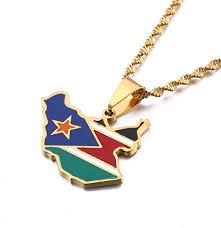

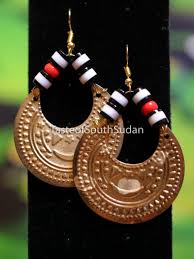

TRIBES IN SOUTH SUDAN AND THEIR FASHION
The Nuer People
A Nilotic ethnic group called the Nuer is mainly found in South Sudan’s Greater Upper Nile region. They also reside in the Gambella region of Ethiopia. The Nilotic language family includes the Nuer language, which is spoken by the Nuer. They are South Sudan’s second-largest ethnic group. The Nuer people are cattle herders and pastoralists. Their cattle are both companions and the cornerstone of their way of life. The Nuer refer to themselves as “Naath.”


The Shilluk People
A significant Luo Nilotic ethnic group in Southern Sudan, the Shilluk are found close to the city of Malakal on both banks of the River Nile. The Shilluk also resided in a number of settlements on the northern bank of the Sobat River, close to where the Sobat enters the Nile, before the Second Sudanese Civil War.
After their neighbors, the Dinka and Nuer, the Shilluk make up Southern Sudan’s third-largest ethnic group.
The Shilluk word for language and mouth, is used to refer to their dialect, which is known as Dhøg Cøllø, dhøg. It is a member of the Western Nilotic subfamily of Nilotic languages’ Luo branch.
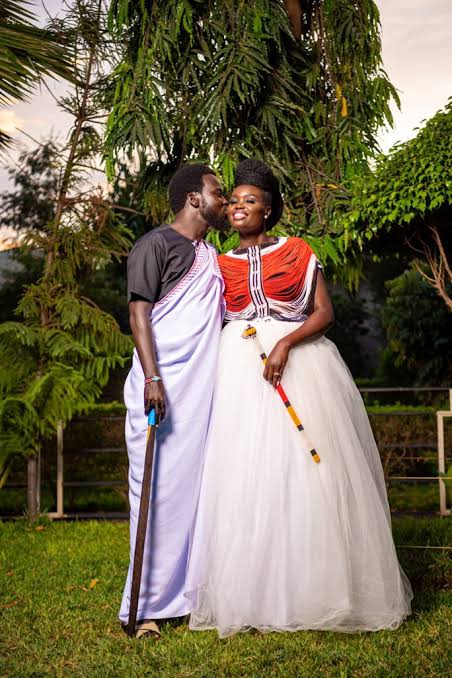



The Azande People
They are Ubangian ethnic group called the Azande. They are mostly found in South Sudan’s southwest. The Azande people of South Sudan reside in the states of Yei, Maridi, Yambio, Tombura, Deim Zubeir, Wau Town, and Momoi as well as Western Equatoria and Western Bahr al-Ghazal. Azande people are Bantu-like, and their languages are also Bantu-like.


TOURIST AND HISTORICAL PLACES IN SOUTH SUDAN
Malakal – You could assume that Malakal in the north was an affluent town given that it has its own international airport and a prime location right on the bank of the White Nile River. But this former commercial hub has almost completely been decimated by the effects of war.

kodok – Fashoda, the town that once gave its name to the infamous Fashoda Incident, when the power struggles between Britain and France in Africa came to a head and these two great superpowers of colonial Europe finally decided to divvy up the continent on roughly east and west terms, was the former name of Kodok.

Kidepo Game Reserve – Elephants and defassa waterbuck frequently wander directly into the wildlife lodges that dot the reserve’s perimeter, so expect to see them up close and personal.

Juba – Greek traders who wished to create recurrent caravan routes between East Africa and Britain’s colonial bases erected it when it was only a remote trading station.

Gogrial – Manute Bol, a great NBA player and activist, was born and raised in Gogrial, which serves as the capital of the state bearing the same name.

Ez Zeraf Game Reserve – Canoeists must navigate through seasonal floodplains, damp grassy plains, and more, all of which are peppered with the galloping forms of hippos and the occasional crocodile.

Bor – One of the best sites to watch a traditional Sudanese wrestling match is still in Bor, which was formerly the location of some of the first Christian missions ever established in this region of Africa.

Boma National Park – is the home of the largest or the second-largest annual land mammal migration on the planet.

Bandingilo National Park – Bandingilo National Park, the natural gem of the Equatoria region, is another fantastic location to visit and take in the stunning spectacle of the annual migration of the white-eared kob.

Aweil – The city of Aweil in northern South Sudan’s Bahr el Ghazal region now boasts brand-new asphalt roads and its own airport’s runways, making it one of the few examples of built-up development in the area.

Wau – There, one can observe the worn-out colonial frontispieces of the makeshift dwellings and markets made from the African bush’s raw materials! One of the largest in the area, the cathedral is remarkable and has a dome on top.

The South National Park – The region hasn’t been well explored over the past 70 years, which is oddly off-the-beaten-path for travelers to this part of Africa. The Congo lion, the colobus monkey, bushbabies, marabou storks, and numerous kobs can all be seen by visitors.

Shambe Nature Reserve – the aforementioned Ez Zeraf Reserve can be thought of as extending southward into the Shambe National Park. This makes it the location of a significant portion of the White Nile River ecosystem, which also includes an area with odd oxbow lakes and sporadic flood plains.

Radom National Park – Visitors can view endangered doka woodlands, elephant herds that roam free, tree-peppered savannah, bouncing gazelles, and an abundance of other uncommon East African animals in that short portion of the reserve, so it is unquestionably worth seeing.

Nimule National Park – The Nimule National Park is very powerful considering its small size. It is home to a variety of animals, including swinging baboons, hippos, and snapping crocs. It also has lush woods and some of the most biodiverse riparian environments in the country.

MUSIC IN SOUTH SUDAN
Many ritual ceremonies of South Sudan’s ethnic groups are accompanied by singing and the playing of musical instruments, demonstrating the importance of music to their cultural traditions. In South Sudan, a number of musical genres are loved as entertainment. There is a classic musical genre in which performers sing solo or with only a light drumbeat as accompaniment. Popular music genres from the West include hip-hop and reggae. Sudanese or Sudanic fusion music is another well-liked genre that combines African and Arabic beats. The cultural traditions of the many ethnic groups of South Sudan include dance in large measure.
Some musicians in South Sudan include:


Some art work in South Sudan include:






MEALS IN SOUTH SUDAN
Asida – a lump dugh, obtained by stirring wheat flour in boiling water, sometimes with added butter or honey.
Mandazi – a form of fried bread also knwn as bofrot or puff puff.
Molokheya – a delicious kind of soup or stew cooked with chicken stock for flavour and served with rice.
Kajaik – a popular Sudanese fish stew, consistig of dry fish.
Wala Wala – a delicious meal from pasta.
Falafel – a deep-fried ball or patty-shaped fritter made from ground chickpeas, broad beans or both.
Asida

Mandazi

Molokheya

Kajaik
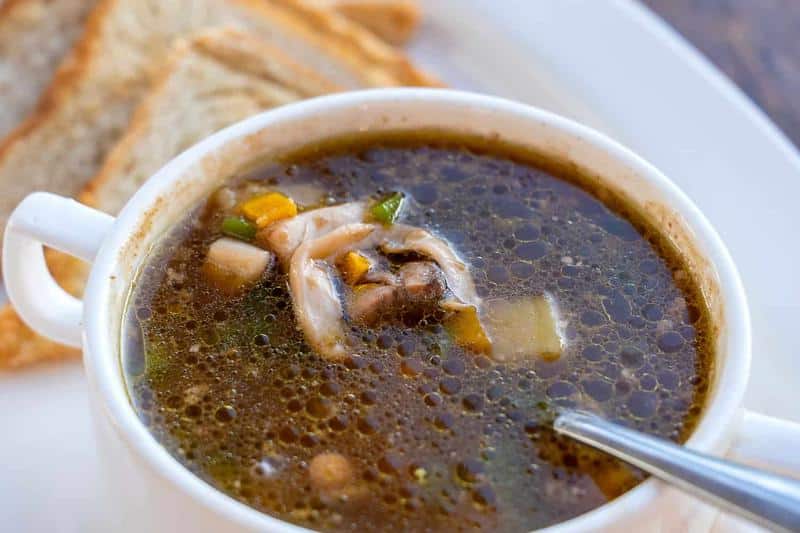
Wala Wala

Falafel

Combo dish – a dish made from spinach, peanut butter and tomatoes.
Goat meat soup – a well-cooked goat meat, well-spiced and served with the stock.
Gurassa – Sudanes pancake or a flatbread that is spongy, versatile, soft and doughy.
Millet porridge – a porrideg made from millet or grains.
Kisra – a popular fermented bread made in South Sudan.
Ful medames – cooked fava beans served with olive, oil, cumin, garlic, onions, lemon juice, chili pepper, vegetables, herb and spice ingredients.
Combo dish

Goat meat soup

Gurassa
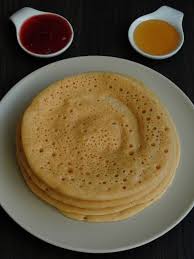
Millet porridge

Kisra

Ful medames

ENVIRONMENTAL CONSERVATION HABITAT PROTECTION IN SOUTH SUDAN
South Sudan lies between latitudes 3° and 13°N, and longitudes 24° and 36°E. Tropical forest, wetlands, and grassland are all present there. Juba is near where the White Nile travels through the nation.
The second-largest wildlife migration in the world takes place in the protected region of Bandingilo National Park in South Sudan. Large populations of hartebeest, kob, topi, buffalo, elephants, giraffes, and lions were found to live in Boma National Park, west of the Ethiopian border, as well as the Sudd wetland and Southern National Park, close to the border with Congo.
Bongo, big forest hogs, red river hogs, forest elephants, chimpanzees, and forest monkeys may all be found in South Sudan’s forest reserves. Astonishingly, the massive movement of 1.3 million antelopes in the southeast is still mostly intact, according to surveys conducted by WCS in 2005 in collaboration with the semi-autonomous government of Southern Sudan.
Habitats in the country include grasslands, high-altitude plateaus and escarpments, wooded and grassy savannas, floodplains, and wetlands.










EFFECT OF CLIMATE CHANGE IN SOUTH SUDAN
The climate in South Sudan is tropical, with two distinct seasons: a wet season with high humidity and lots of rain, followed by a dry season. The average temperature is always high, with the coldest month being July with average temperatures between 20 and 30 °C and the warmest being March with average temperatures between 23 and 37 °C.
The rainy season can start in April and go until November, although May through October is when it rains the most frequently. May is typically the wettest month. The change to southerly and southwesterly winds, which results in somewhat lower temperatures, increased humidity, and more cloud cover, is “affected by the annual movement of the Inter-Tropical Zone”.
South Sudan has experienced severe flooding in recent years as a result of climate change’s increasing effects on the country. Every year, between 750,000 and over one million people are affected by floods, and half of them are compelled to abandon their homes for higher ground.









GENDER EQUALITY IN SOUTH SUDAN
As of February 2021, women had 28.5% of the seats in South Sudan’s parliament. To attain gender equality, however, more needs to be done in South Sudan. 51.5 percent of women between the ages of 20 and 24 who were married or in a union before turning 18 did so.
Some prominent women in South Sudan include:
Jemma Nunu Kumba – South Sudanese politician, who was the speaker of the Transitional National Legislative Assembly.
Mary Jarvis yak – South Sudanese politician, who served as Minister of Finance and Planning.
Angelina Teny – a politician, who served as Minister of Energy and Mining in South Sudan.
Betty Ogwaro – a parliamentarian in the government of South Sudan.
Jemma Nunu Kumba
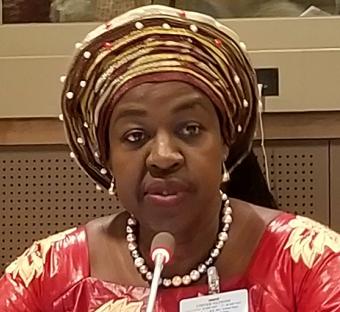
Mary Jarvis yak

Angelina Teny

Betty Ogwaro

Dr. Leonardo Itto – a politician and former Minister of Agriculture and Forestry in South Sudan.
Beatrice Khammisa Wani-Noah – a politician and former Minister of Foreign Affairs and International Coorperation in South Sudan.
Rebecca Nyandenf De Mabior – South Sudanese politician, who served as Vice President of South Sudan.
Dr. Leonardo Itto

Beatrice Khammisa Wani-Noah

Rebecca Nyandenf De Mabior









